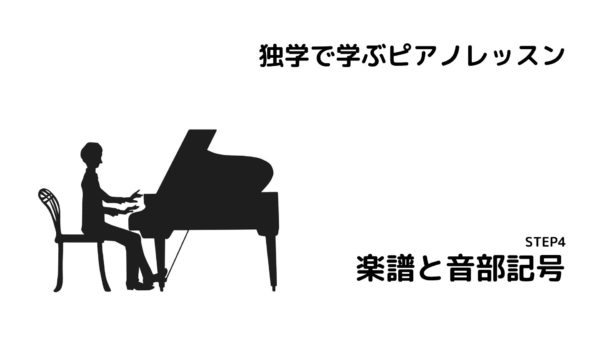
独学で無料でピアノを学ぶ大人の初心者のための学習講座です。
ステップ4では「楽譜と音部記号」について学習していきます。
長かった座学もここでひと段落です。講座はまだ折り返し地点ですが、ここまで学習すればひとまず楽譜が読めるようになります。気を抜かずしっかり学習していきましょう。
では詳しく解説していきます。
所要時間は「約15分」です。
今回のテーマ
- 「五線譜とは」
- 「ト音記号とヘ音記号」
- 「大譜表(グランドスタッフ)」
- 「実際に弾いてみよう」
五線譜
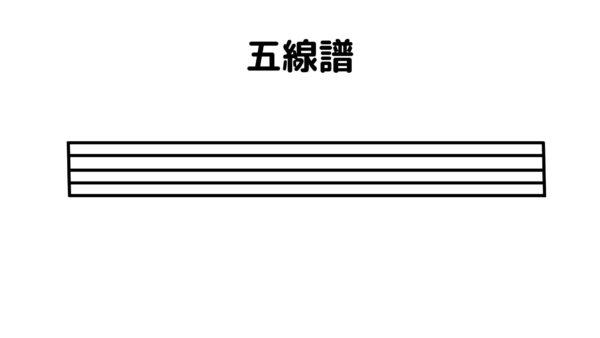
最初は「五線譜」についてです。
「五線譜」とは楽譜を作るときのテンプレートになっている、音符を書くときの「マス目」です。その名の通り横に五本の線が入っており、行の最初と最後には縦線をいれて中を囲みます。この五線譜の中に音符を入れていくことで、それがどの音程かを分かりやすく表現しているのです。
五線譜の他にも楽譜を作るテンプレートは存在しますが、ピアノにおいてはほとんどの楽譜がこの五線譜を使用して作られています。
音部記号
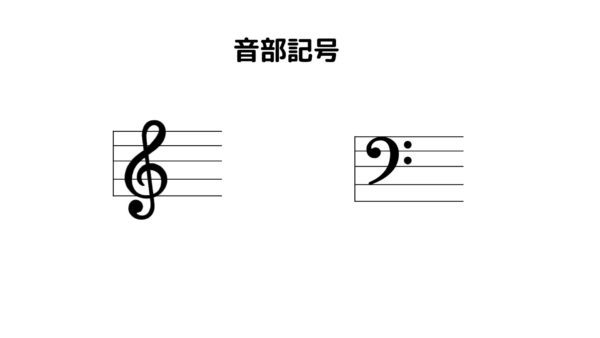
「音部記号(おんぶきごう)」とは五線譜の中で使われる記号の1つです。よく使う音部記号には「ト音記号」と「へ音記号」があります。音部記号を使うことで、その五線譜が鍵盤のどの位置のことを指しているのかが分かるようになります。
イマイチ意味がわからないかもしれませんが、このまま読み進めてください。「ト音記号」と「へ音記号」を説明していきますので、それをみたら意味が分かると思います。
ト音記号
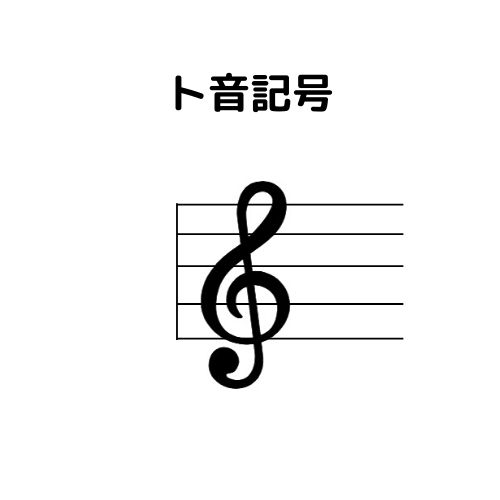
「ト音記号」は上図の五線譜の中にある記号です。
音楽のことをほとんど知らなくても、見たことがある記号だと思います。
ト音記号が書いてある五線譜では、その中に入っている音符は下図のような音名となります。
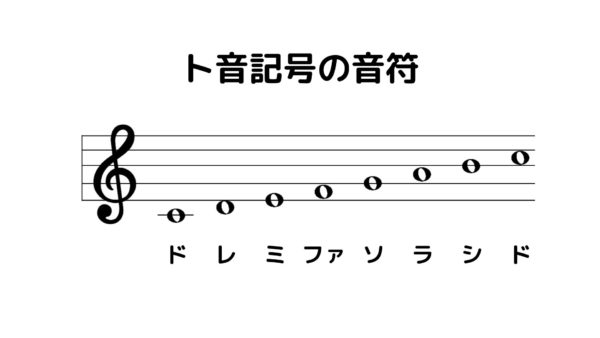
このようにドレミファソラシドが並びます。五線譜の中で音符が半分上の段になればドレミファソラシドが一つ進みます。この仕組みを理解しておきましょう。
ここで「左側のド」の音符を見てください。
全音符に横線がついていますね。このように五線譜からはみ出てしまう音符には横線を追加することになっています。「レ」のようにギリギリ五線譜にくっついているものまでは新たに横線は書きません。「ド」の2つ下の「ラ」を書くときにはさらに線が追加され、そこでは2本の横線が出てきます。
ここでは全音符を書いて説明しましたが、もちろん4分音符や8分音符でも同じ位置にあれば同じ音名となります。
へ音記号
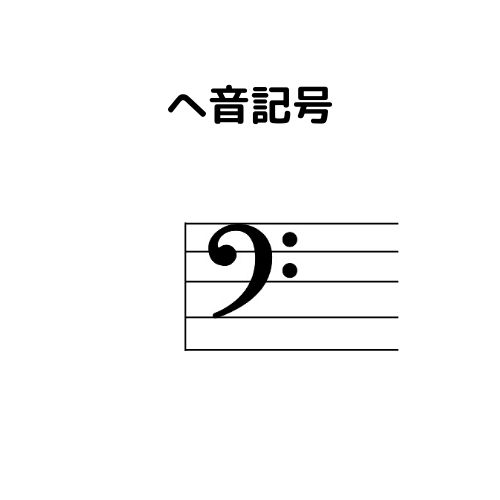
「へ音記号」は上図の五線譜の中にある記号です。
数字の「9」のような形をしていおり、その右側に黒い点が2つ付きます。作曲や編曲をしない限り書くことはありませんので、その形や位置を正確に覚える必要はありません。
へ音記号が書いてある五線譜では、その中に入っている音符は下図のような音名となります。
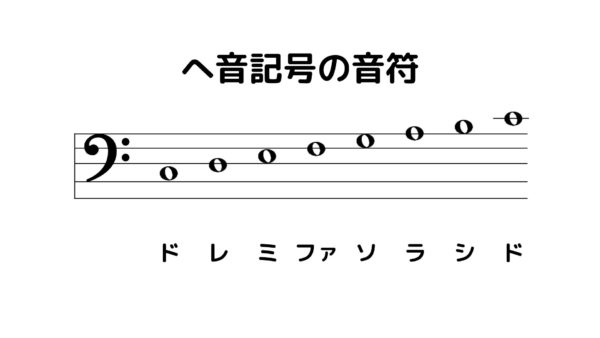
ト音記号と場所がガラッと変わっていますね。このように五線譜の中に音符があっても、それが「ト音記号」か「へ音記号」かで対応する音が変わってくることに注意してください。
【重要】五線譜の楽譜と鍵盤の位置
ここまでト音記号とへ音記号を学習してきました。それぞれどこの鍵盤と一致するのかは下図のようになります。
画面が小さい方はクリックしたり、拡大したりしてご覧ください。
図を見て分かるようにへ音記号のドレミファソラシドは1オクターブ分低い音の鍵盤を指しています。そしてへ音記号から上にはみ出た「ド」とト音記号から下にはみ出た「ド」がそれぞれ一致します。この「ド」がちょうど鍵盤の中央のドになるのです。
この五線譜に書かれた音符と鍵盤の位置は、ピアノの楽譜を読む上で最も大事な要素です。
必ず覚えて、スラスラ楽譜が読めるようになりましょう。
覚えるまではスクリーンショットや印刷したものをピアノに置いて見ながら演奏していきましょう。
大譜表(グランドスタッフ)
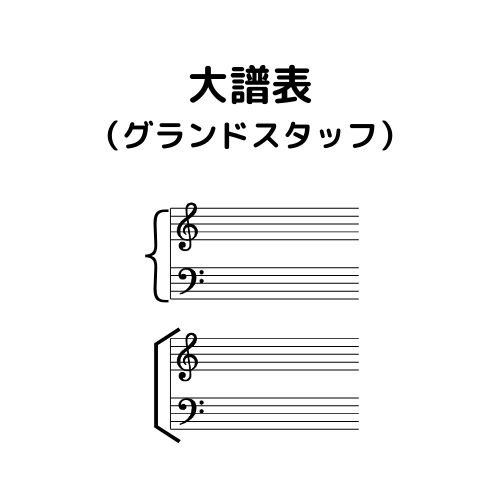
大譜表とは上図のような2つの五線譜がつながったものを言います。また大譜表は英語でグランドスタッフといいます。
これは、「上の五線譜が右手」、「下の五線譜が左手」で演奏してくださいという意味です。
多くの大譜表は上がト音記号、下がへ音記号で作られています。
実際に練習してみよう
さてここまで、五線譜や音部記号、その鍵盤の位置を学習してきました。
繰り返しになりますが、ここまで覚えれば多くの楽譜が読めるようになり、ピアノの演奏ができるようになります。
ここからの練習は実際の楽譜を使って練習していきましょう。
練習①
最初の練習曲は童謡「きらきら星」です。
メロディーがシンプルで、とても演奏しやすいピアノ初心者向けの曲として有名です。今回の練習①までは音符の下に音名を記載しています。確認しながら練習してみてください。最初は右手だけで演奏し、次に左手だけで演奏していきましょう。
五線譜が途中で切れていたり、ト音記号のあとに学習していない記号がありますが、それは次のステップで学習します。この練習では無視して問題ありません。
画像が見にくい方はコチラのPDFを使ってください。
練習②
次の練習曲はこちらです。あえてタイトルは伏せておきます。(英語では書いていますが。。)
演奏してみて何の曲か当ててみてください。またドレミの音名をつけていませんので、しっかり五線譜の音符の位置や鍵盤の位置を確認して演奏していきましょう。
画像が見にくい方はコチラのPDFを使ってください。
この曲まで演奏できるようになったらステップ4はクリアです。
このサイトでは初心者向けの童謡をまとめています。次のステップに進む前に、自分の知っている童謡で練習していきましょう。
このレッスンのまとめ
- 「五線譜」
- ・音符を入れていくマス目のこと
- 「ト音記号とへ音記号」
- ・五線譜に入った音符が鍵盤のどの位置になるかを決める記号
- ・ト音記号とへ音記号はそれぞれ対応した鍵盤の場所が違う
- 「大譜表(グランドスタッフ)」
- ・右手用と左手用に楽譜を分けて作ったもの

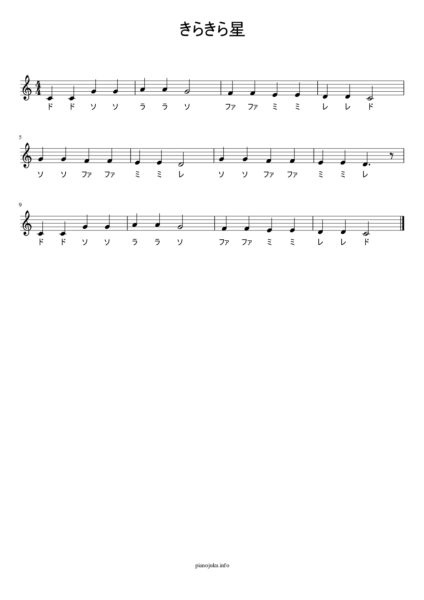
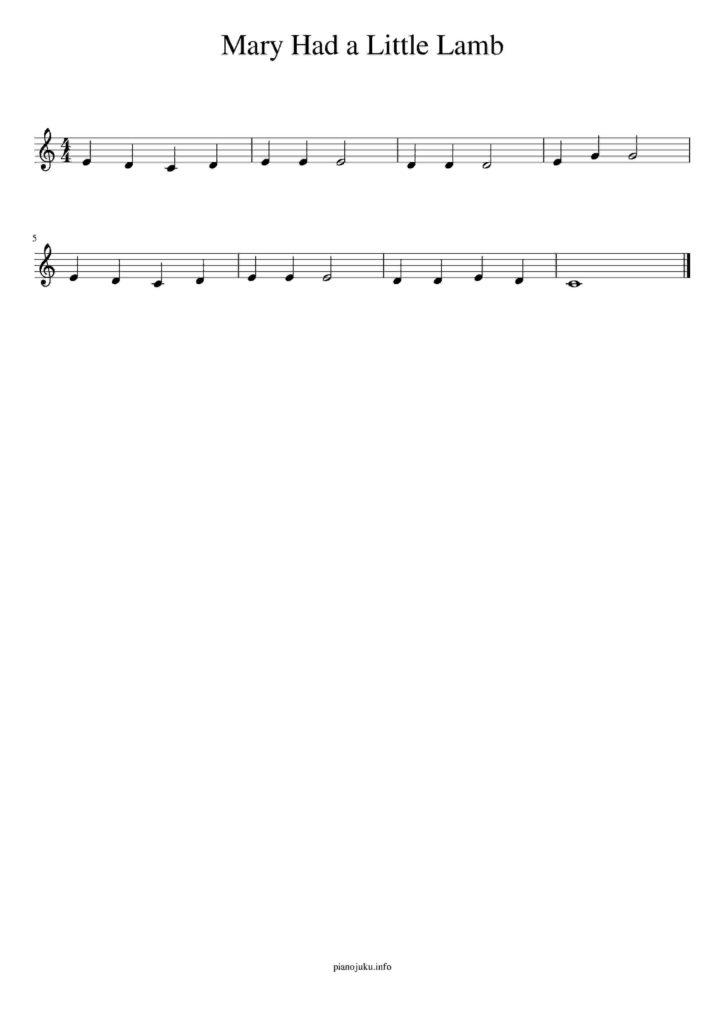
コメントを残す